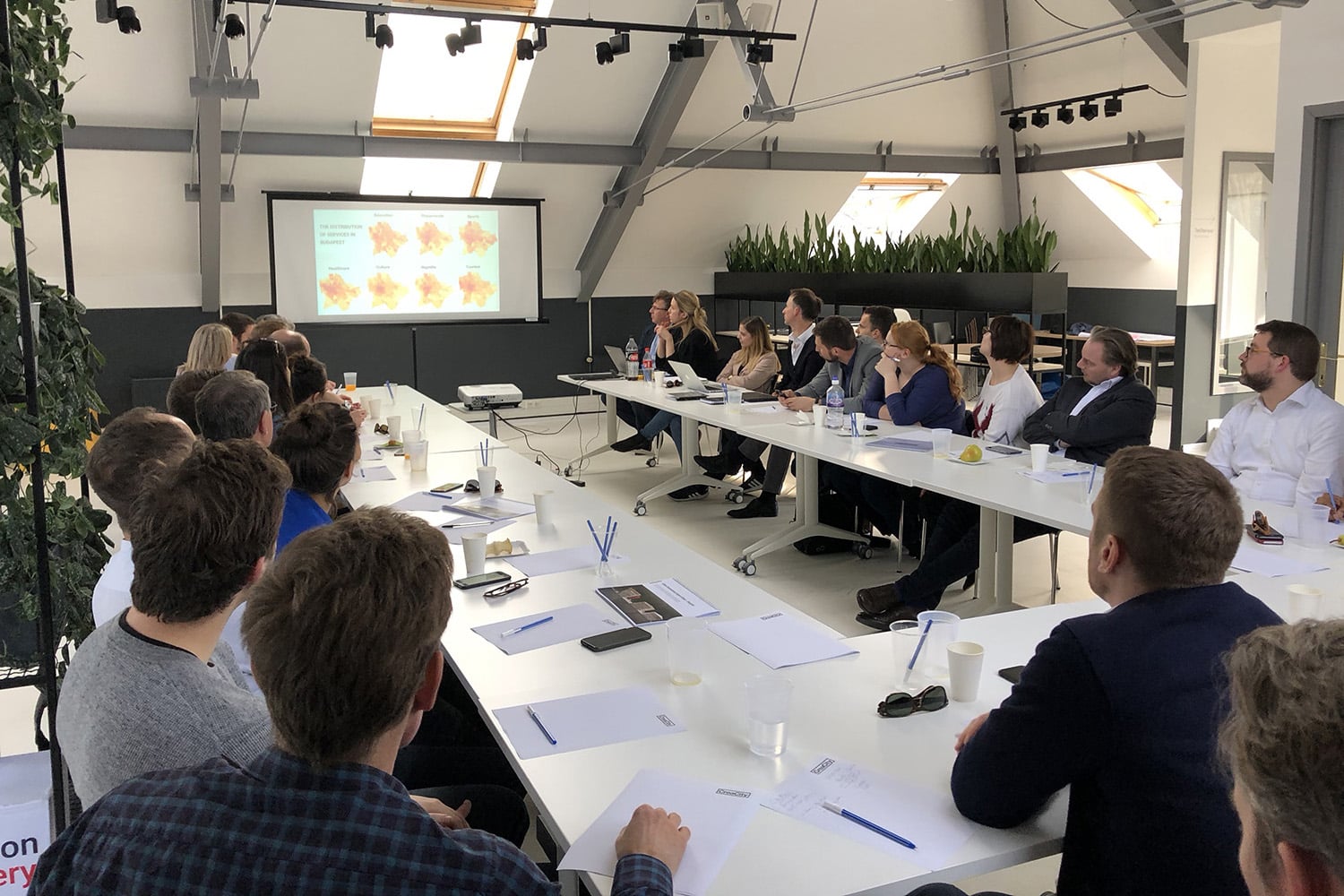Budapest regeneration exchange insights
SUCCESSFULLY DELIVERING CHANGE

We believe that the best solutions are yet to be discovered and the best outcomes yet to be delivered. That is why we prepare organisations for change and help them implement it. We do this through an intimate understanding of their business, a relentless focus on delivery, the use of techniques that challenge the status quo and bridge traditional disciplines. We provide a range of services to public and private organisations including project and programme management, property consultancy, change management and strategy development and strategic advice. Contact us to discuss a project.
We believe that collaboration is the key to achieving the best possible results in any area of work, and especially in urban regeneration. Following this ethos, we started the European Regeneration Exchange Programme to create an international knowledge-sharing network to promote best practice in regeneration. Budapest, the cultural, economic, and political capital of Hungary was chosen as our destination in 2019. We were delighted to meet with Renata Vasko, Chief Executive of regeneration consultancy Creacity, as well as Dr. Balázs Török and Peter Bukta who are leading the way in regeneration and planning in Budapest, and Dr. Zsolt Berki of Fomterv, a leading civil engineering and infrastructure design firm.

Budapest’s Regeneration Programme
Following decades of political turmoil, the government began a gradual investment programme focused on three pillars:
Urban block rehabilitation received €1 billion in municipal and state funding and €2 billion in investor side funding
Isolated interventions received €300 million
Urban area-scale interventions received €400 million
Taken together, this programme represents one of the longest regeneration projects in Europe. The programme, seen as a political priority to drive social improvement and employment, resulted in renovations of old buildings, and many important new establishments like the Palace of Arts, Budapest Music Centre, the local football stadium, the National Theatre, and the headquarters of Telekom.
So, what can we learn from this that we can use to apply to projects in the UK? Our top 5 Insights:
Planning is led from two directions – top-down by central government-led schemes such as the redevelopment of a riverside promenade for trams and people, and bottom-up by local resident, such as the grassroots-led pedestrianisation of important central bridges. What does it mean? For the UK, we think this multidirectional-led planning approach could lead to interventions that are meaningful for users and affordable for government to implement and maintain. For example, the Extinction Rebellion occupation of Waterloo Bridge also showed Londoner’s that a pedestrianised bridge with recreation opportunities could provide safer and more enjoyable benefits to pedestrians whilst requiring little maintenance.
Despite the promise of the development plan, there is no central organisation to manage and drive the delivery of major projects. Most developments are led by the central government. What does it mean? British and American cities benefit from a system that allows for development to be led by an independent, arms-length organisation that can drive development in a focused area. Structures such as the London Docklands Development Corporation, built to develop the East London Docklands area, and the Boston Planning and Development Agency, tasked with developing the Seaport neighbourhood, can maintain political independence and not be bogged down by changes in of central government.
The Danube River, surrounding brownfield sites, and local geological nuances drive areas for redevelopment. The government is taking a place-led approach to bring change to residents and businesses. What does it mean? We see placemaking and place-led approaches as key to the future of regeneration and redevelopment across the world. Government and agencies ought to acknowledge that new neighbourhoods, employment zones, and industrial lands must take advantage of their places. Unused areas/distressed properties and geographic challenges are opportunities for creativity. Developers and government can capitalise on community assets to inform and build robust place-making.
There is a desire to create sub-centres with their own amenities and infrastructure as a way to spread the benefits of development to residents. What does it mean? Spreading the benefits of new homes, jobs, improved infrastructure, and opportunity will be critical in uplifting communities. Governments and agencies that can create projects that holistically serve new developments and existing neighbourhoods alike will see benefit for all local residents.
The city’s population is static at circa 1.7m and the government wants to increase population to circa 2m by 2050 by introducing incentives to families to grow. However, it is an actively anti-immigrant government and is facing political tension in the EU. What does it mean? Political pressure on legal immigration can present reputational challenges to investors and new residents. Cities and government should have an open view towards immigration can improve the investment climate for new developments.


